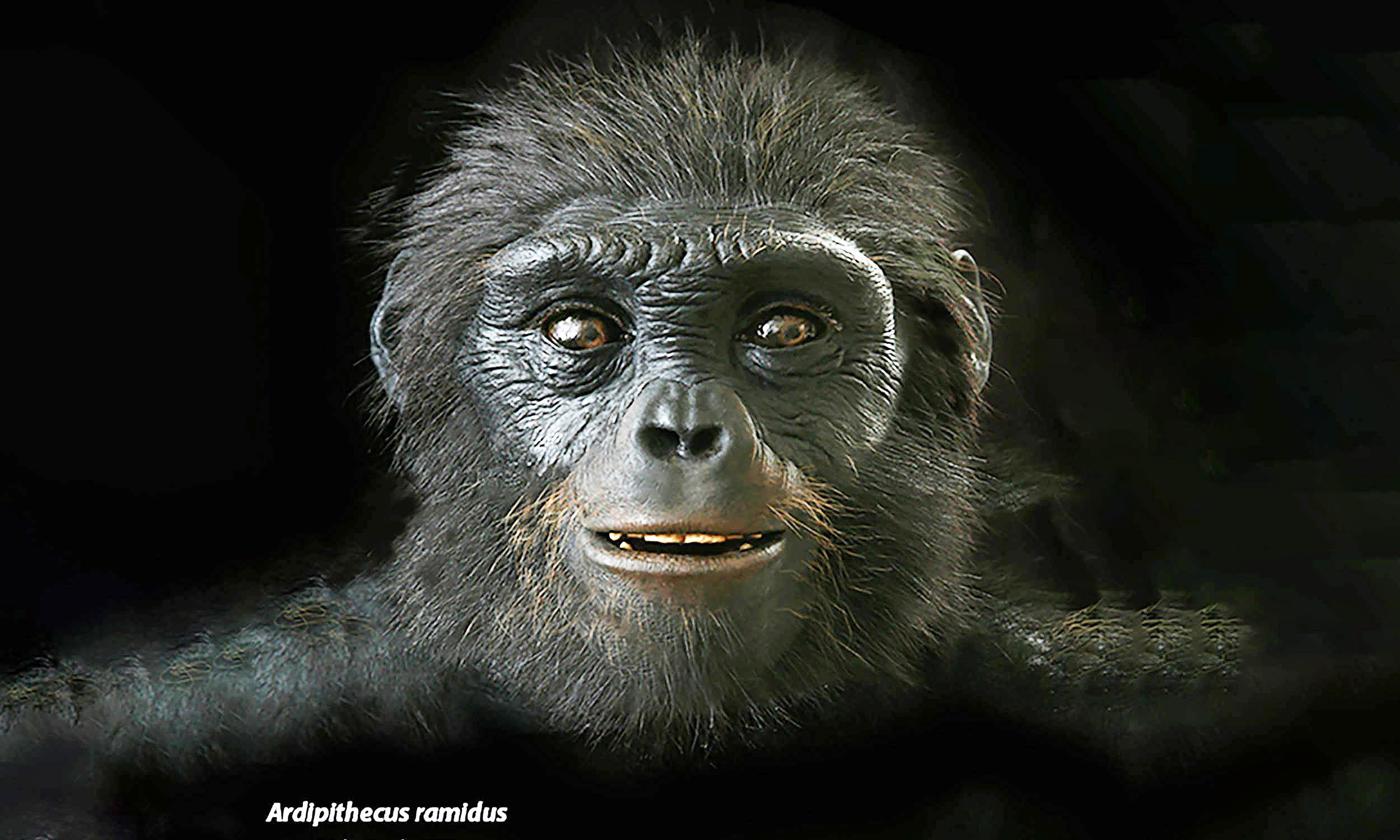Humans have always wondered where they came from. Fossils hold clues, and scientists search for them carefully. Each discovery reshapes what we know about evolution.
A new study from Washington University in St. Louis has revived a century-old debate. The researchers revisited Ardipithecus ramidus, or “Ardi,” the 4.4-million-year-old ancestor that may bridge the gap between apes and humans.
Ardi lived long before “Lucy” and offers a window into how early ancestors balanced tree life and ground life. Earlier studies claimed Ardi moved differently from modern African apes.
Fresh look at Ardipithecus ramidus
The scientists closely examined the ankle bone (talus) of Ardipithecus ramidus, as well as the talus and calcaneus. When compared with those of apes, monkeys, and early humans, the results stood out.
One key angle – the “talar angle,” basically how the ankle joint tilts – was 14.5°, the highest of any fossil hominin studied and squarely in the range of non-human primates, like gorillas and bonobos.
They also noted a deep groove for the flexor hallucis longus tendon (a big toe flexor), plus a rimmed joint surface – together forming a mosaic: ape-like traits for climbing paired with tweaks that would help “push off” during bipedal walking.
These values suggest powerful ankles for climbing and sturdy support for walking upright.
Crucial stage of evolution
The authors even point out another Ardipithecus ankle from Ethiopia that might have had a smaller angle, hinting at normal variation that natural selection could later shape toward better two-legged walking.
This balance of movement marks a crucial stage in evolution. Ardi was not fully adapted to the ground but wasn’t bound to the trees either. Her bones record a lifestyle in transition.
“One of the surprises in this discovery was that Ardi walked upright, yet retained a lot of ape-like characteristics, including a grasping foot,” explained Thomas (Cody) Prang, assistant professor of biological anthropology.
The team’s work corrects earlier interpretations that separated Ardi too far from apes. Instead, it shows that Ardi’s anatomy kept one foot in the trees and another on solid ground.
Evolution through similar paths
The study also compared Ardi’s anatomy to that of New World monkeys like those in the family Atelidae. Both groups developed similar climbing traits independently, a case of convergent evolution.
This means that evolution found similar solutions for similar challenges, even in distantly related species.
Ardi’s ankle did not evolve randomly. It adapted to handle both climbing and limited upright walking, setting the stage for later hominins.
Prang and his co-authors concluded that Ardi’s anatomy supports African ape-like movement – a mix of vertical climbing and walking on all fours with heels touching the ground.
“Based on their analysis, they concluded that living African apes – like chimpanzees and gorillas – are like dead ends or cul-de-sacs of evolution, rather than stages of human emergence,” Prang said.
The discovery challenges the long-held view that humans evolved from a general tree-dwelling ancestor. Instead, it suggests the first humans came from apes that were already skilled in both climbing and ground travel.
“Nobody disputes the importance of the discovery (of Ardi), of course, but many people in the field would say the initial interpretation was probably flawed. And so, this paper is a correction of that initial idea that distanced Ardi from chimpanzees and gorillas,” Prang noted.
Questions left unanswered
The team used detailed 3D measurements and statistical tests to sort ankle shapes and estimate how different traits evolved.
They acknowledge some overlap – different animals can share similar ankle shapes – so no single measurement “proves” one behavior.
But the total pattern across the ankle, plus other skeletal clues, points strongly toward vertical climbing paired with early forms of upright walking.
The study also notes there may have been normal variation within Ardipithecus populations that natural selection could later shape into more efficient bipedalism.
Ardipithecus and human evolution
These findings challenge the idea that our last common ancestor with chimpanzees had a more generalized, purely tree-dwelling body plan.
Instead, the ankle evidence suggests that the earliest hominins – including Ardipithecus – kept an African-ape-like climbing style while starting to experiment with upright walking.
The authors argue that it’s hard to reject the “African ape-like ancestor” model based on what we see in Ardipithecus hands, feet, body size, and now the ankle.
In short: early hominins likely moved through trees like apes and also took early steps toward bipedalism.
The findings do not suggest that humans evolved directly from chimpanzees. Instead, both species share a common ancestor that moved like modern chimps.
Lessons from Ardipithecus ramidus
This insight shifts how scientists think about bipedalism. It wasn’t a sudden leap from the trees but a gradual process built on strength, balance, and adaptation.
“The finding is both controversial and also aligned with what people thought originally,” Prang concluded.
Ardi’s story proves that evolution is rarely straightforward. It twists, overlaps, and sometimes revisits old forms.
By piecing together bones like hers, scientists can move a step closer to answering the ancient question: where do we come from?
The study is published in the journal Communications Biology.
—–
Like what you read? Subscribe to our newsletter for engaging articles, exclusive content, and the latest updates.
Check us out on EarthSnap, a free app brought to you by Eric Ralls and Earth.com.
—–
First Appeared on
Source link













